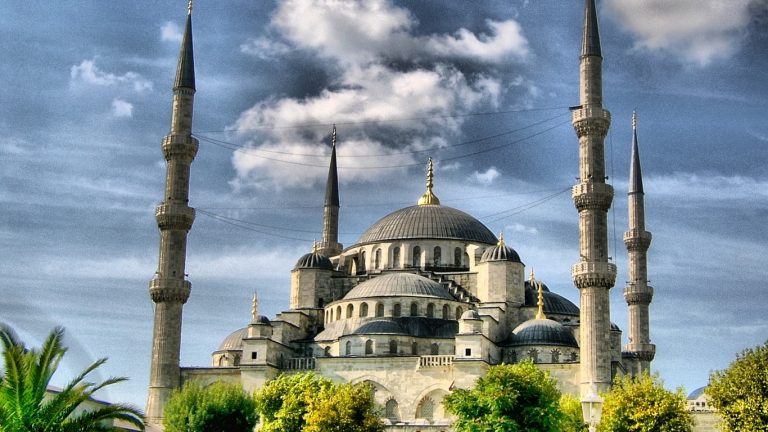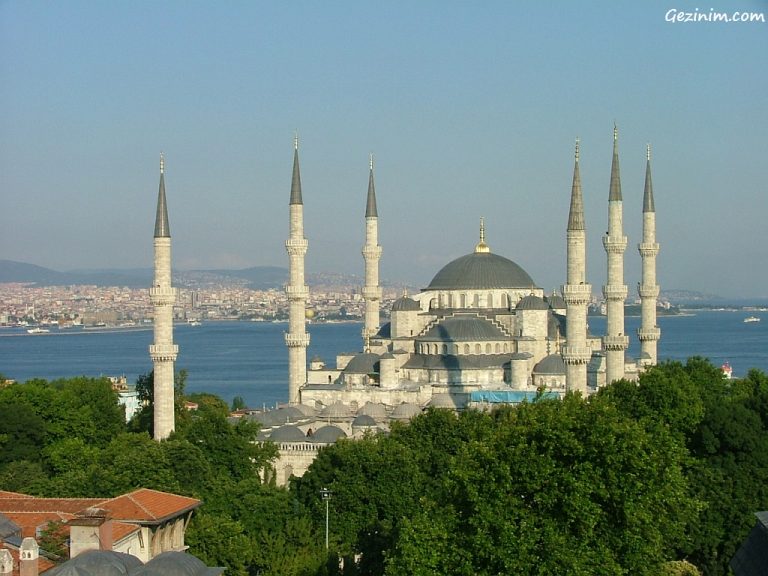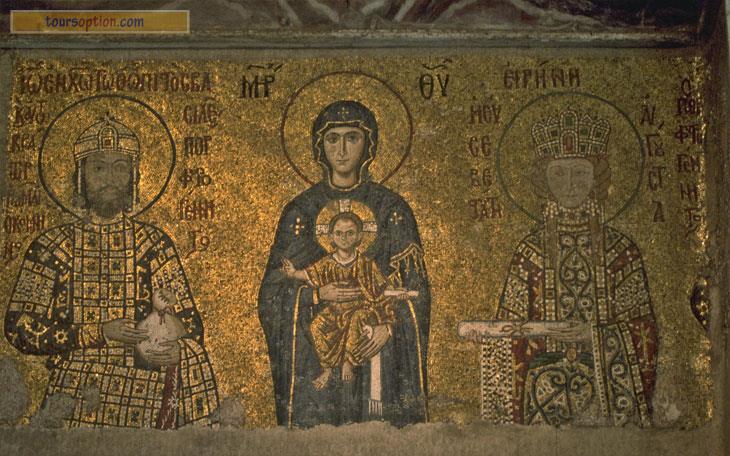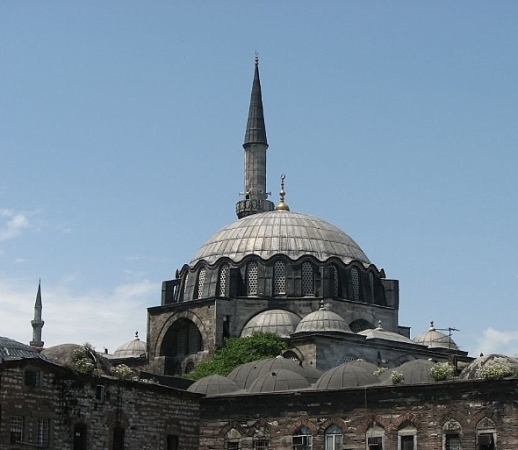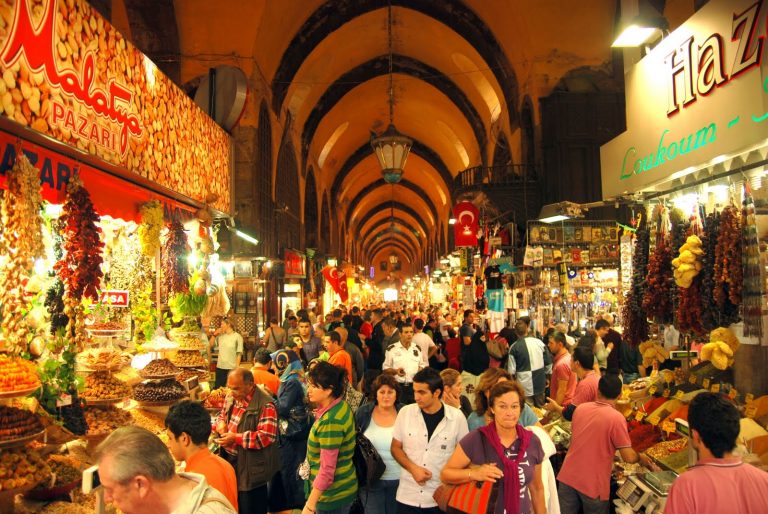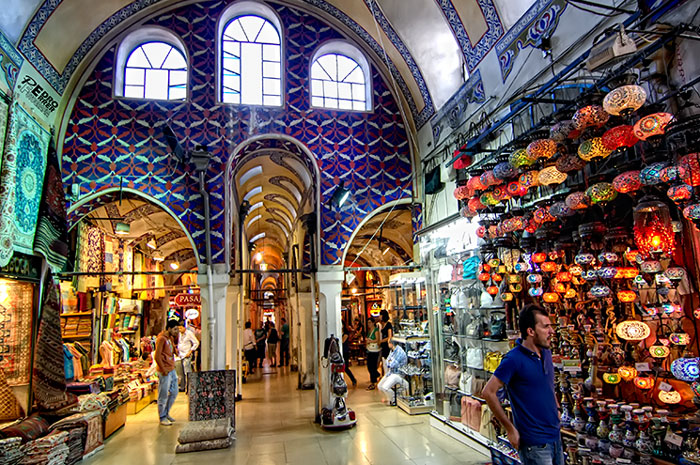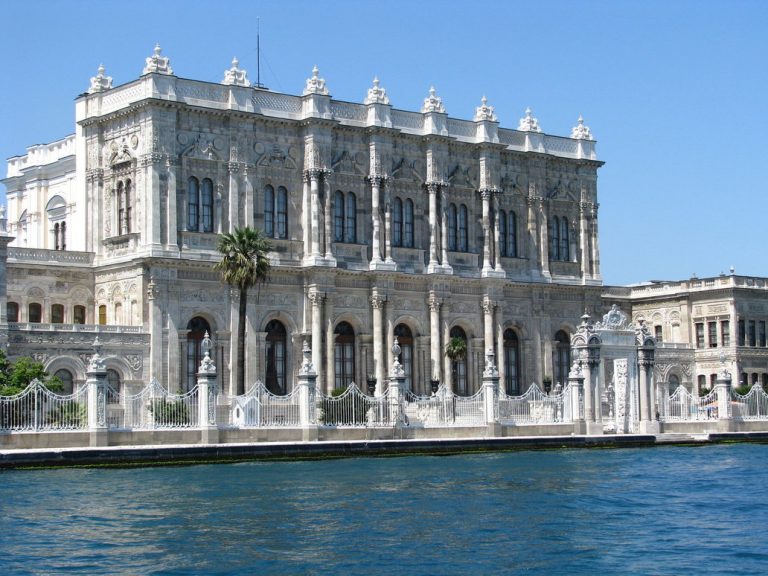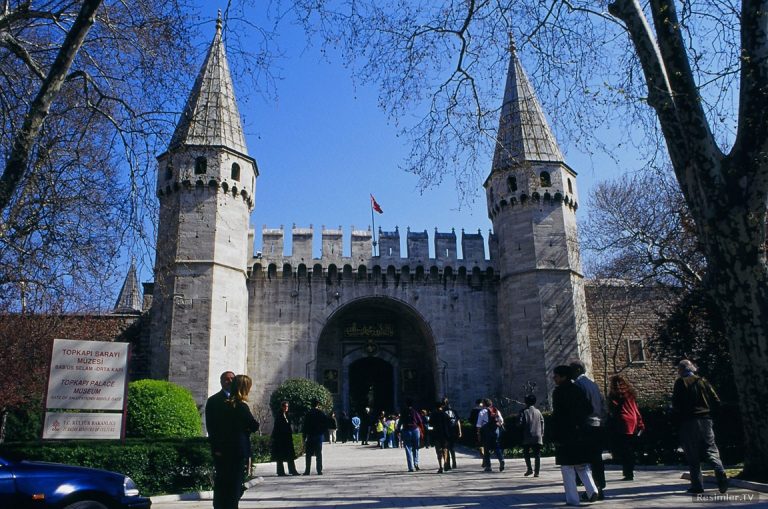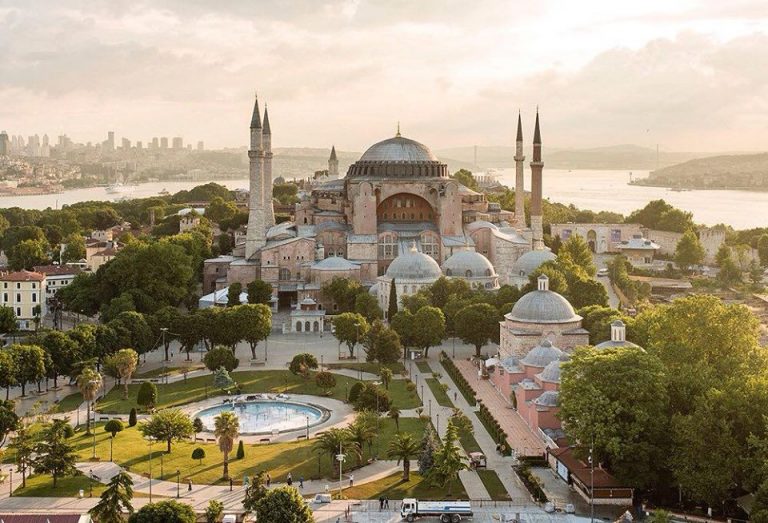Topkapi Palace
After the conquest of Istanbul by Mehmed the Conqueror at 1453, construction of the Topkapı Palace was started at the year 1460 and completed at 1478 . Palace was built upon a 700.000 square meters area on an Eastern Roman Acropolis located at the Istanbul Peninsula between Sea of Marmara, Bosphorus and the Golden Horn. Topkapi Palace, was the administrative, educational and art center of the Empire for nearly four hundred years since Mehmed the Conqueror until Sultan Abdulmecid who is the thirty-first Sultan. Although Palace was abandoned by the Ottoman Dynasty by moving to the Dolmabahce Palace at middle 19th century, Topkapı Palace was protected its importance everytime.
After the establishment of the Republic of Turkey, Topkapı Palace, was transformed into a museum at the date April 3th 1924 and it was also the first museum of the Republic of Turkey. Topkapi Palace Museum is covering approximately 400.000 square meters at the present day. Topkapı Palace divided from the city from the land-side by the Imperial Walls which is made by Mehmed the Conqueror. It divided from the city also from the sea-side by the Byzantine Walls. Topkapı Palace is one of the biggest palace-museums with its architectural structures, collections and approximately 300.000 archive papers.
There are surroundings like gardens and squares around the Palace. Palace which its Main Gate located at the Hagia-Sophia side, has four courtyards which has passages between them. At the first courtyard, Hagia-Irene Church which was used as Armory and the outer service buildings like Mint, Oven and Hospital were located there.
Second Courtyard was the Divan Square (Square of Justice) that hosting the administrative buildings fort the Empire. This courtyard was also a ceremonial courtyard. Divan-ı Hümayun (Kubbealtı / Imperial Council) and Treasury of the Divan-ı Hümayun were located on that courtyard. Behind the divan structure, there is the Tower of Justice which represents justice of the Sultan. Dormitory of the Halberdiers with Tresses and the Entrance of Harem were also located at this courtyard. There are also Privy Stable structures at the same side around an inner courtyard. At the Marmara side of the Courtyard of Justice, there are the Palace Kitchens and additional service buildings. Babüssaade (Gate of Felicity) where coronation, funeral and festival ceremonies held is located at the Northern side of the Courtyard of Justice.
The third Courtyard (Enderun – Inner Palace) was the section that the Palace aghas were educated and assigned to high ranks of the State. It formed by the dormitories and the structures belongs to the Sultan. Hall of Audience where Sultan accepts viziers and ambassadors, Enderun Library which was constructed by the Sultan Ahmed III, Treasury of Enderun also known as Conqueror’s Pavilion, Privy Room (Chamber of Sultan) and the Aghas’ Mosque which was constructed for the Enderun aghas at the reign of Fatih are the important structures of this courtyard. Courtyard is surrounded by the Big and Small Room Wards, Expeditionary Force Ward, Pantries’ Ward, Treasure Ward and the Privy Room Ward which added to the Privy Room at the 19th century.
From the Privy Room, and the Enderun Courtyard, there are passages to the Imperial Sofa courtyard which hosts to the kiosks and gardens. At the Marble Terrace part of this courtyard, there are Revan and Baghdat Kiosks, Circumsision Room and the Iftaree Canopy. Under this terrace, there is a hanging flower garden which surrounded by wooden Sofa Kiosk and the Tower of the Chief-Physician. At the Marmara side of this garden, there are Sofa Mosque, Mecidiye Kiosk and Wardrobe Room. It also known that there are lots of kiosks and service structures at the Privy Gardens which surrounds the Palace in axis of Marmara, Seraglio-Point and the Golden Horn.
